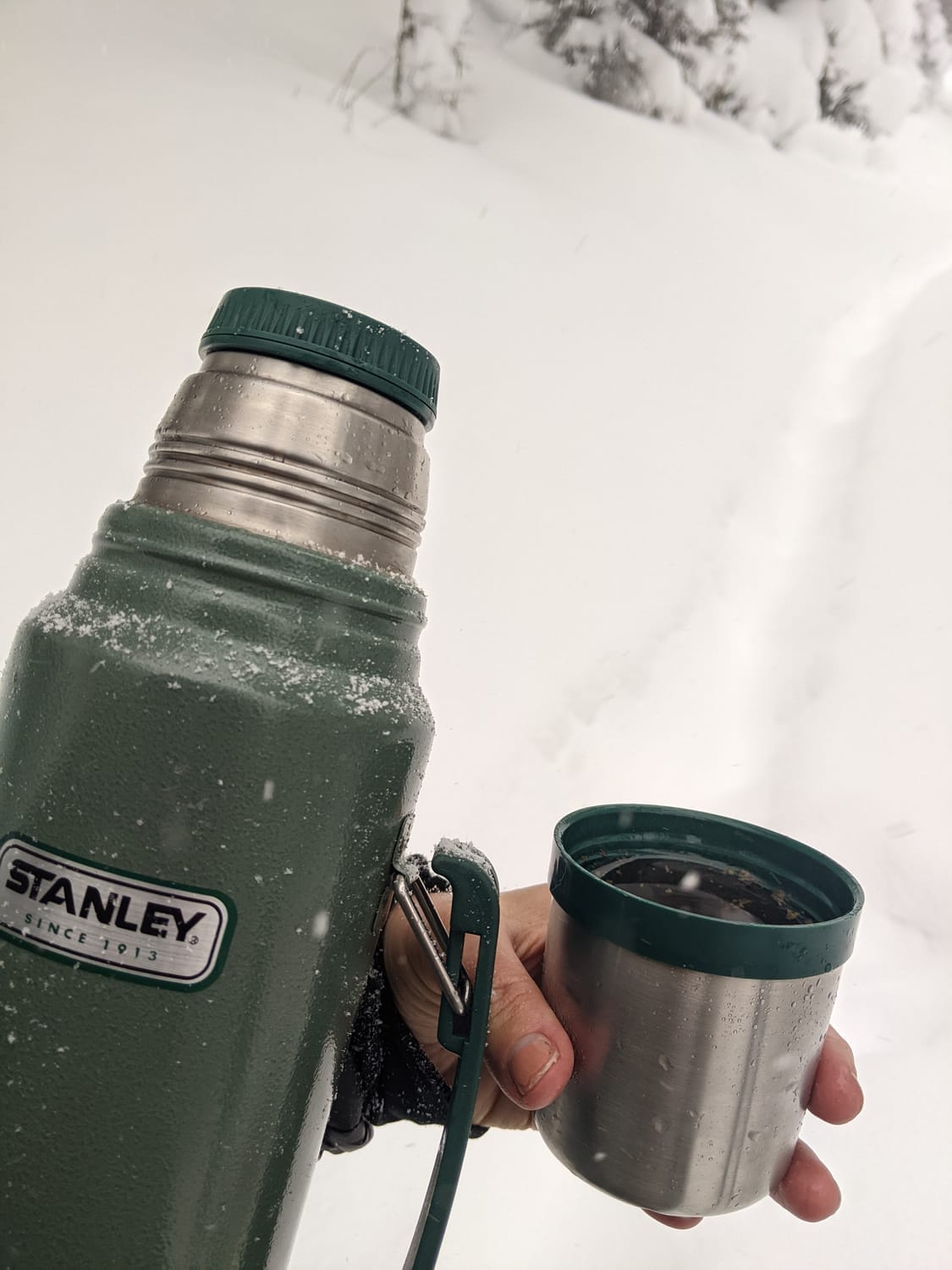4 Winter Plants for Brewing Forest Tea
When guiding forest bathing walks, many times we complete our journey by sitting in a circle and sharing tea. If possible, the tea will consist of plants gathered in the forest during the walk. In this way, we imbibe the forest through taste, as well as energetically sipping on the essence of the forest. I enjoy this practice so much that I have adapted it to my hikes and snowshoes alone or with friends.
I have a large thermos that I fill with hot water before I go. It miraculously stays hot for hours. I love the ritual of collecting berries, needles and flowers from the forest as I wander, and popping them into my thermos to begin the process of brewing. I always ask the plant I am collecting from beforehand for permission and give thanks when it is granted. Other than being polite, this is also good practice because the plant might say no to protect you from unripe or unclean matter. This is a joyful practice for me to participate with nature beings in a reciprocal way.
It is important to know which plants make good tea, are not poisonous and what time of year is best to collect them. You can choose one plant to study at a time and learn as much as you can about it from various resources. Spend time with the plant as well and get a feel for it and what kind of medicine it has to offer. Then taste it to see if you like the taste and experiment with how long you like to brew it for. Perhaps you add it to your tea at the beginning of the walk, but perhaps it is better to wait until the end or it might be too pungent. Learning about the plants around you and their medicinal properties helps you to gain familiarity with the nature beings in your ecosystem.

The best part of all is infusing the forest into my body when I drink the delicate brew with an open heart. Recently, I went snowshoeing through the forest to an alpine lake surrounded by mountain peaks. At the end of the excursion, I sat on a rock with my back to the wind and sipped the forest tea, allowing it to warm me from the inside out and to warm my hands hugging the mug. This was a wonderful way to enjoy a few moments before returning the way I came. Each sip gave me an opportunity to appreciate the scenery, the peace and quiet, the ability of my body to transport me there and the many gifts of the natural world. Plus each plant had a medicinal property working subtly to improve my health. Before I left the rock, I poured out some tea as a gift of thanks.
When I returned home, I still had some tea left and I shared it with my husband. Sitting on the couch and drinking my forest tea, brought me back to the moment and the feeling I had on the rock of total peace and appreciation.
I use this practice year round, but I find it especially potent in winter when it’s cold and barren out. I am reminded that even during these months, the natural world continues to provide nourishment. Also, drinking hot tea is much nicer than cold water when I am outside in the freezing temps. I don’t have any fancy recipes. I simply toss the plants in the hot water. Usually, the plant material sinks to the bottom. Berries tend to float and I either ingest them or spit them out.

This Sunday evening begins the Jewish holiday of Tu BiShvat, which literally translates to the 15th day of the Hebrew month of Shevat. Tu BiShvat is one of Judaism’s agricultural holidays and is the New Year for the Trees, also known as the Jewish Earth Day. Because it is mid-winter and much of the annual rain has fallen in Israel, the waterlogged soil presents a good opportunity to plant trees.
The medieval Kabbalists, or Jewish mystics, infused Tu BiShvat with a more spiritual significance. They believed that since fruits held in them the spark of divine creation (the seeds to grow a tree), as they believed that humans held in them the spark of the divine, then to eat certain fruits was a way of releasing these divine sparks into the world.
Trees encompass so much. They are portals, healers, wise ancestors, and immortality-gifting gods. Imagine what you can discover, spending time with a tree.
Winter Forest Tea Recipe:
Here are some plants that are available most everywhere and you can safely gather in the winter (but always double check for your region to make sure that they are 100% safe).
Conifer needles: any variety of pine, spruce, fir, redwood or (wild) hemlock tree can be used. Avoid using needles from any cypress or yew tree as they can be toxic. (Pregnant women should avoid needles altogether.) Conifer needles are high in vitamins C and A, as well as many minerals and antioxidants.
Usnea: You might call this Old Man’s Beard. Usnea is the soft green lichen that hangs off tree branches and is super medicinal. It’s antimicrobial, antiviral, great for respiratory ailments and more. You can roll it into little balls to add to your tea. This is one to put in at the end of the walk as it is bitter.
Rosehips: Rosehips are sweetest and most potent after a frost. Depending on how fierce your winters are, they may hang on for a while during winter months. They are high in antioxidants and vitamin C.
Juniper berries: When they are blue, they are edible and a bit spicy. They are not technically berries but fleshy pinecones (who knew?). They are anti-inflammatory, full of antioxidants, antibacterial, antifungal, and heart healthy. Like rosehips, you may still be able to find some during winter months.
All four of these ingredients are easy to spot and harvest and make a yummy winter forest tea. Gather and give thanks. Place plant materials in a hot thermos, wander through the forest engaging all your senses, rest somewhere scenic, sniff and sip.
Categories
Subscribe
Dive into the heart of nature with our weekly newsletter with nature writing that reconnects you to the earth's wonders. Plus, stay updated on events designed to bring our community closer to the natural world.
Created with © systeme.io





